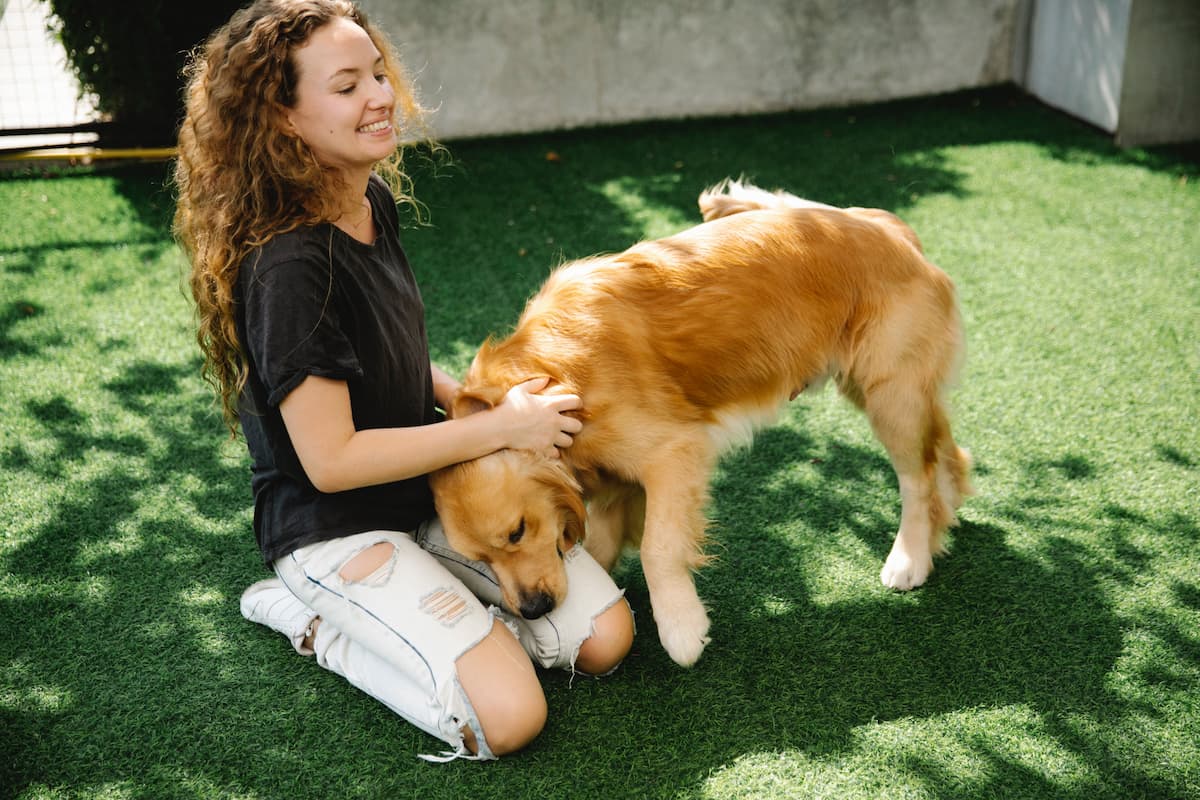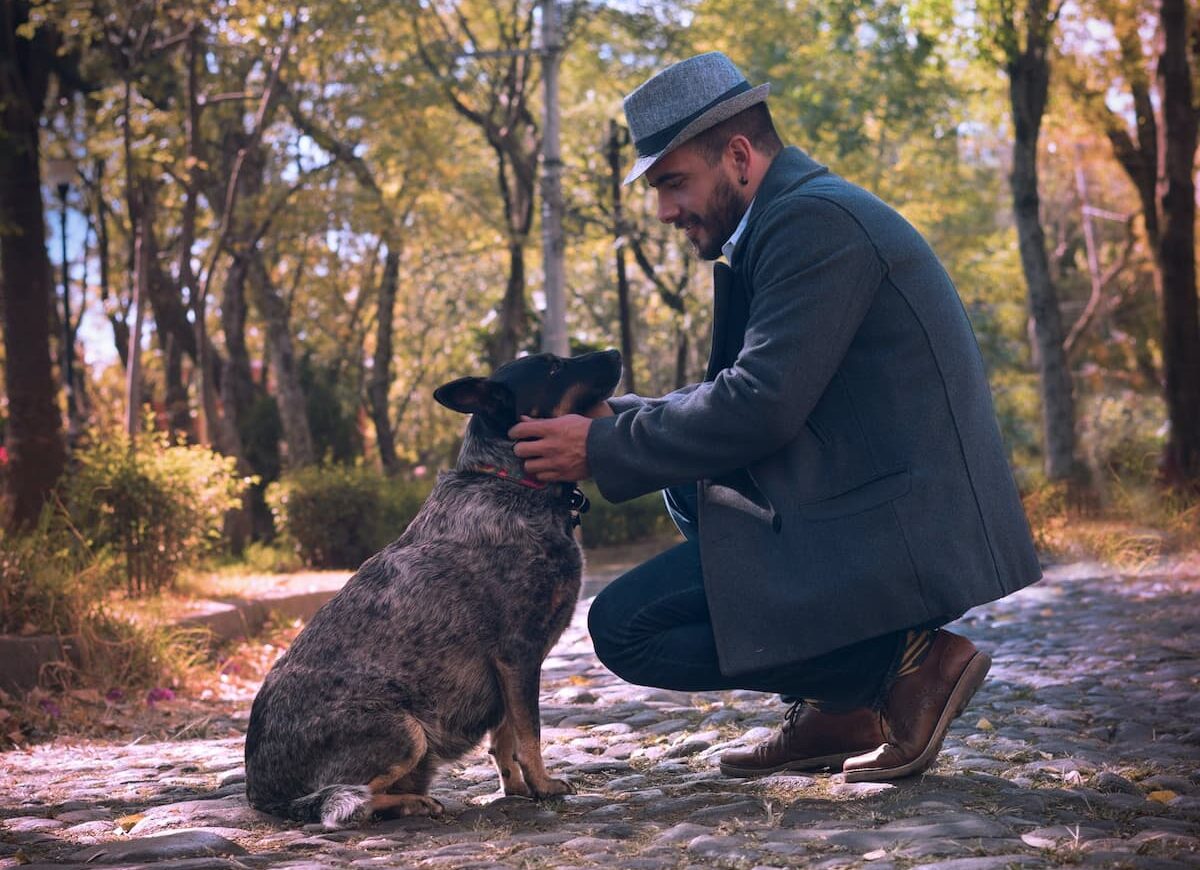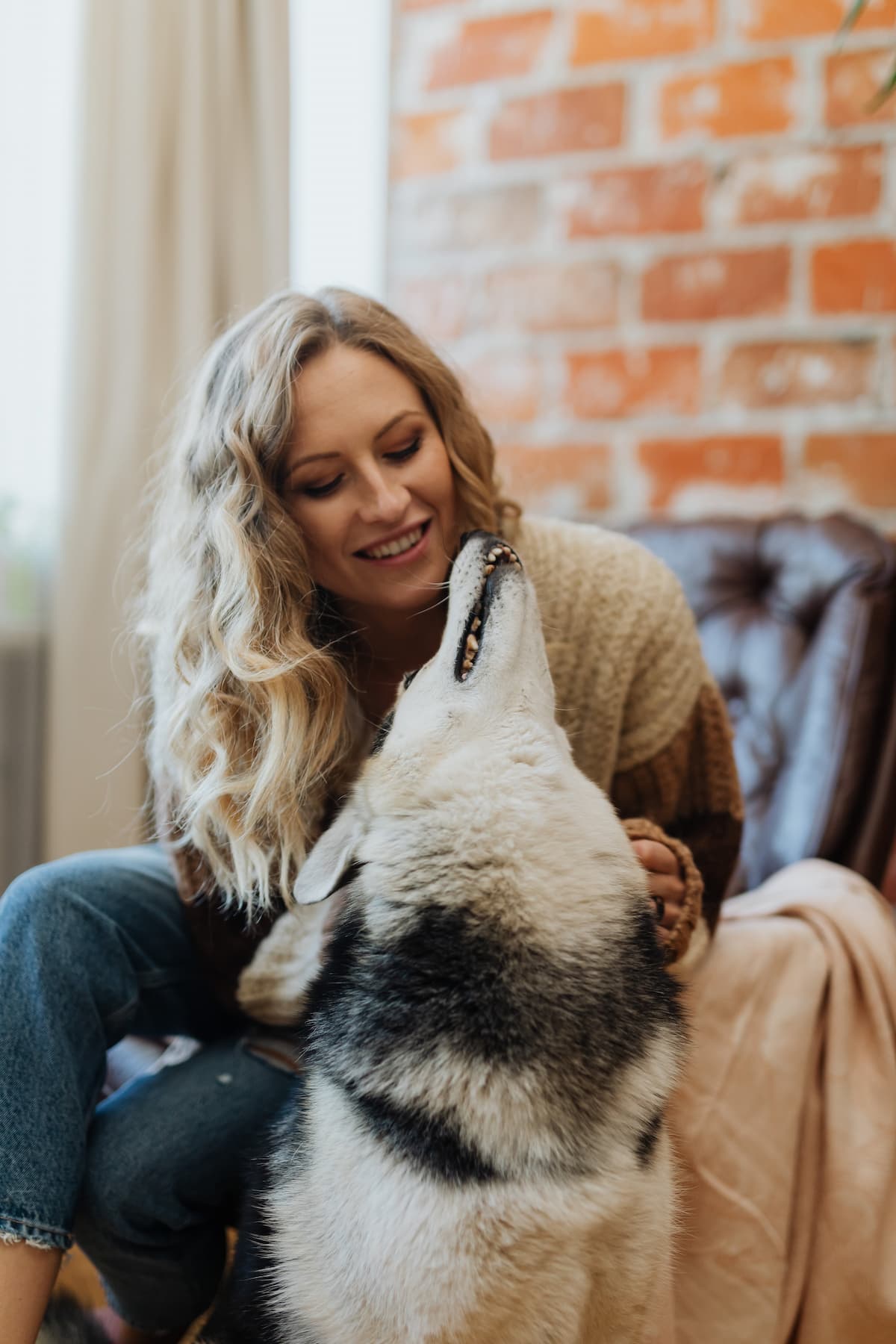Does your dog move its legs when you scratch them?
Have you been curious about this strange but adorable behavior?
Read on to have your curiosity slaked.
Understanding the anatomy of a dog’s leg reaction to scratching
Dogs are truly fascinating creatures, and one of the quirkiest behaviors they exhibit is the adorable leg-kicking motion they make when you scratch them in the right spot. You may have wondered why they do this, and the answer lies in their biology and instincts.
It turns out that this endearing reaction is an involuntary response that can be traced back to their wild ancestors.
When you scratch your dog’s favorite spot, such as their belly or the base of their tail, you may notice their leg starts to kick or twitch involuntarily.
This is known as a “scratch reflex,” and it is an automatic response that is hardwired into your furry friend’s nervous system.
The scratching sensation triggers the nerves in their skin, which then sends a signal to their spinal cord, causing their leg muscles to contract.
It’s similar to the way our own muscles react when we have a reflex, like when a doctor taps our knee with a hammer.
But why do dogs have this reflex in the first place? It can be traced back to their days as wild animals.
When dogs lived in the wild, their ancestors would often encounter insects, pests, or irritants that would try to bite them. The scratch reflex helped them to fend off these potential threats.
By automatically kicking or twitching their leg when something touched their skin, they could dislodge or discourage any biting insect or creature that could harm them.
Even though our domesticated dogs may not face the same dangers, their instincts are still there, causing that adorable leg movement when we scratch them.
Another reason dogs kick their legs when being scratched is related to their nerve endings. Dogs have a higher density of nerve endings in certain areas of their bodies.
These are particularly concentrated in their ears, belly, and the back near the base of their tail.
When you scratch these areas, it stimulates the nerves, creating a pleasurable sensation for your furry friend.
The kicking motion is their way of expressing their delight and enjoyment in response to your touch.
The psychological reasons why dogs respond to scratching with kicks
In addition to reflexes, there are also several psychological reasons behind this endearing response:
- Pavlovian Conditioning: Dogs are highly perceptive animals with a strong ability to associate stimuli with certain outcomes.Over time, they learn that when you scratch them in a particular spot, it leads to pleasure and relaxation.This association triggers an automatic response in their brain, causing their leg to move as a reflex.
It’s similar to how we humans instinctively jerk our leg when a doctor taps our knee with a reflex hammer.
- Ticklish Sensations: Dogs, like humans, have sensitive nerve endings all over their bodies.When you scratch them in the right place, it can create a tickling sensation that feels irresistible to them.This ticklish feeling can be enjoyable and might even elicit feelings of joy and happiness, causing their leg to involuntarily kick in response to the sensation.
- Social Bonding: Dogs are social animals that thrive on companionship and touch.The act of scratching their leg or belly provides physical contact and affection, which strengthens the bond between you and your furry friend.When you scratch them in that magical spot, it releases happy hormones like oxytocin in their brain, promoting a sense of comfort, trust, and love.
Their leg movement can be seen as an expression of contentment and gratitude for the attention and affection you’re giving them.
How to properly scratch your dog’s leg to elicit the desired response
Now that you know the reason behind your dog’s leg responses to scratching, here’s how to properly scratch your dog’s leg to elicit that desired response.
Remember, every dog is unique, so don’t be discouraged if it takes a bit of trial and error to find the perfect scratching technique.
Here’s a simple guide to get started:
- Start by approaching your furry friend calmly and slowly, ensuring that they are relaxed.
- Gently stroke the back of their leg, right above the paw, using your fingertips.Observe their reaction to see if they start twitching their leg.
- If your dog seems indifferent, try using a bit more pressure or scratching in a circular motion.Experiment until you find the sweet spot that makes them kick their leg joyfully.And believe me, it’s totally worth it!
Remember, scratching your dog’s leg is a fun and interactive way to bond with them.
Just like us, our four-legged pals have their favorite scratching spots.
So, take the time to explore, experiment, and above all, enjoy the contagious happiness that comes from a dog’s leg-kicking response!
Tips to enhance the leg-kicking experience for your furry friend
Understanding the science behind why dogs move their legs when you scratch them can help enhance this bonding experience for both you and your furry friend.
Here are some pawsome tips to make those leg kicks even more enjoyable!
Firstly, it’s essential to find the sweet spot! Just like us humans, dogs have certain areas that are more sensitive to touch.
The belly, chest, and neck are often the prime targets for getting those delightful leg kicks going.
Experiment gently with different touches and areas of their body to find where your doggo enjoys being scratched the most.
Remember, never force your furry friend to endure a scratch in an uncomfortable area as it may lead to stress or anxiety.
Secondly, timing is everything! Observe your dog’s body language and pay attention to their cues.
Some pups may prefer leg kicks while lying down, while others might enjoy it during playtime or relaxation sessions.
By being attentive to your four-legged friend’s mood and adjusting your scratching routines accordingly, you can ensure a delightful experience that suits their individual preferences.
Finally, don’t forget the power of positive reinforcement! When your fur baby moves their legs in response to your touch, praise them with gentle words, treats, or a rewarding belly rub.
Associating the leg-kicking experience with positive reinforcement helps deepen the bond between you and your pup, making them even more eager to participate.
Remember, patience is key – every dog is different, so take the time to understand what makes your furry friend’s tail wag with joy!
So, next time you scratch your dog’s favorite spot and witness those adorable leg kicks, remember these simple tips to enhance the experience.
Find their sweet spot, play to their preferences, and reward them for their charming response.
With a little love and understanding, you and your furry companion can create lasting memories filled with laughter and delightful leg kicks!
FAQ
Q: So, why exactly do dogs do this leg-kicking thing when you scratch them?
A: Well, you know when you give your dog an ear or belly rub, and suddenly their leg starts twitching? It’s actually an involuntary reaction called the ”scratch reflex.”
Q: Is this scratch reflex a unique response only found in dogs?
A: Nope, not at all! In fact, the scratch reflex is quite common among mammals, including humans. If you’ve ever had an itchy spot on your body and couldn’t help but scratch it, you’ve experienced a similar reflex.
Q: That’s interesting! But what triggers this reflex in dogs?
A: The key lies in a cluster of nerves present in your furry friend’s skin, called the “sensory receptors.” When you scratch or rub an area that has more of these receptors (like their belly or behind the ears), it stimulates them.
Q: Okay, so the sensory receptors get stimulated.
What happens next?
A: Great question! Once stimulated, these receptors send a message to your dog’s spinal cord, and right back to the nerves in the leg muscles.
Q: Is this why dogs’ legs start twitching?
A: Absolutely! The message sent by the sensory receptors tells the muscles in your dog’s leg to contract and move them involuntarily.
It’s like their legs have a mind of their own when the sensations get intense.
Q: So, does this mean that dogs are merely enjoying the scratch?
A: While we might assume that dogs kick their legs because they love the sensation, it’s not the whole story.
Sure, it feels fantastic for them, but this reflex is more of a neurological response than a sheer sign of pleasure.
Q: Is there more to this scratch reflex behavior?
A: Yes, indeed! Another interesting aspect is that this leg-kicking response can be traced back to a dog’s wolf ancestors.
In the wild, wolves used to scratch themselves to dislodge parasites.
So, even our domesticated furry pals have retained some of those ancestral reflexes.
Q: Do all dogs exhibit this behavior when scratched?
A: Not necessarily.
Just like how humans have different sensitivities, dogs vary in their response to this reflex.
Some will immediately start kicking their legs with a slight scratch, while others may not show any reaction at all.
Q: Can we scratch our dog’s legs intentionally to make them kick?
A: Unfortunately, it’s not that simple.
The scratch reflex is specifically triggered by certain areas with high concentrations of sensory receptors. So, if you try to stimulate their leg directly instead of scratching those specific spots, the response might not be the same.
Closing Remarks
It turns out that our dogs are not just superficially responding to our affectionate gestures, but rather tapping into their primal instincts.
Through millions of years of evolution, dogs have honed their sensory abilities, one of which is their remarkable sense of touch.
When we scratch them, we unintentionally activate a specific set of nerves connected to their spinal cord.
But what does this have to do with their leg movements, you might ask?
Well, let me take you back to our dog’s ancestors – the wolves.
These magnificent creatures lived in the wild, where survival depended on their hunting skills and cunning nature.
When a wolf successfully captures its prey, it’s not uncommon for its hind legs to simulate running movements in the excitement of the moment.
This instinctual behavior allows wolves to maintain their sense of balance and prevent injury during intense moments of the chase.
Fast forward to our domesticated canines of today, who have inherited this unique trait from their wolf ancestors.
When we scratch their sweet spot, it triggers a reflex in their spinal cord that prompts their leg to mimic a running motion.
It’s their way of subconsciously responding to the surge of pleasure and excitement that comes with receiving our love and attention.
So the next time you observe Fido’s legs twitching madly while you scratch him, remember that it’s not just an adorable quirk; it’s a throwback to their wild heritage.
It’s their way of saying, “Wow, I’m having such a good time right now!” and it’s a testament to the undeniable bond we share with our four-legged companions.
So keep scratching, keep cuddling, and keep nurturing the incredible bond between humans and our faithful companions.
After all, they deserve all the love and scratches in the world for the unwavering joy and companionship they bring into our lives.












